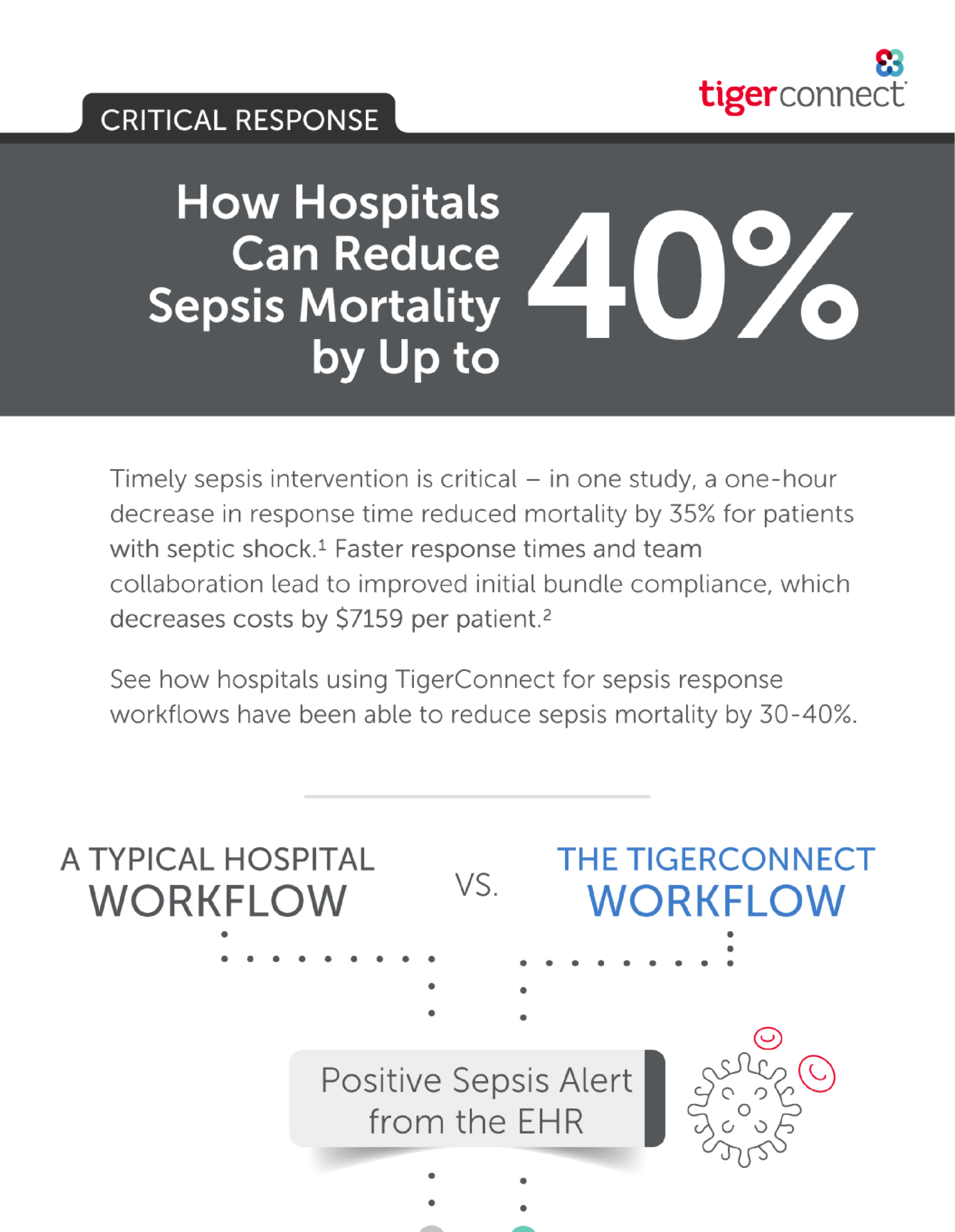Home / Blog /
Conquering the Silent Killer: How to Reduce Sepsis Mortality Rates with Cutting-Edge Communication Solutions

Conquering the Silent Killer: How to Reduce Sepsis Mortality Rates with Cutting-Edge Communication Solutions
Sepsis, the body’s extreme response to an infection, is the leading cause of death in U.S. hospitals, according to the Centers for Disease Control and Prevention (CDC). Sepsis is responsible for more than 350,000 adult deaths in the United States each year, a grim toll that shows no sign of subsiding. A primary factor in sepsis deaths can be attributed to delayed response in diagnosis and treatment.
Consider a common scenario: A patient will check into the ER after exhibiting signs of an infection, but with crowded hospitals and staffing shortages, the likelihood of immediate treatment is slim. This is where the problem begins. While some patients may not initially show signs of sepsis upon arrival at the hospital, delays in diagnosing and treating the infection can worsen their underlying condition and put them into septic shock.
When treating sepsis, it is essential that treatment begin as early as possible. According to the Sepsis Alliance, the chance of sepsis progressing to severe sepsis and septic shock, causing death, rises by 4% to 9% for every hour treatment is delayed. More startlingly, prompt diagnosis and treatment could prevent sepsis-related deaths and disabilities, as up to 50% of sepsis survivors suffer from post-sepsis syndrome, which includes both physiological and psychological effects.
Speed Sepsis Response with TigerConnect
|
 |
A Breakdown in Communication
Poor communication is a major contributor to delays in sepsis treatment. The challenge that many healthcare organizations face with sepsis identification and treatment is delayed and inefficient collaboration between care team members.
In a typical hospital workflow, the sepsis response team is often paged by an operator via antiquated communication methods like phone calls and pagers. The staff involved are unable to prioritize their response with the information they receive. Once at the patient’s bedside, they must navigate through a web of communication methods to reach providers to determine necessary interventions.
Communication breakdowns such as waiting for callbacks and delays in getting the right person in front of the patient at signs of sepsis lead to unnecessary delays in sepsis treatment.
Advanced Workflows and Collaborative Technology
Health systems should leverage a clinical communication & collaboration platform (CC&C) to close the communication gap, improve sepsis response time, and deploy protocols and proactive tactics to prevent sepsis from worsening.
TigerConnect offers workflows to improve care team collaboration so that when the Electronic Health Records (EHR) notes possible signs of sepsis, or if the clinician sees signs of sepsis during ED evaluation based on symptoms, the Sepsis Response Team is automatically activated in TigerConnect by sending out a group message alerting all members to collaborate on next steps, such as ordering labs.
By using the TigerConnect Clinical Collaboration Platform, Sepsis Response Teams are quickly activated and empowered to collaborate with other care team members (like an attending physician). Improved collaboration drives compliance with sepsis bundle measures, improving patient outcomes, reducing readmissions, and reducing opportunities for more severe infections to generate. TigerConnect enables care team members to assess and implement interventions quicker to prevent the worsening of sepsis conditions.
By utilizing this technology, health systems can increase sepsis initial bundle compliance and reduce sepsis mortality rates by up to 40%. This means that health systems can cut high costs associated with sepsis and, most importantly, improve outcomes for septic patients. Here are four advantages of using TigerConnect to enhance sepsis response:
- Rapid access to critical patient data: Through seamless integration with EHRs, clinicians can instantly retrieve pertinent clinical information when a patient meets possible sepsis criteria. Critical lab results can be sent directly to the provider or nurse through TigerConnect to help speed decisions.
- Time-saving team allocation: The sepsis response team can be automatically populated by role using integrated on-call scheduling, saving valuable time during critical situations.
- Efficient group communication: Utilizing group and team messaging features, every member of the Sepsis Team can quickly collaborate and formulate a treatment plan, resulting in faster initiation of treatment.
- Early sepsis prediction and intervention: TigerConnect enables the diagnosis of sepsis at an earlier stage, allowing for swift intervention and ultimately reducing the time needed for effective treatment.
Putting It to the Test
Temple University Health System, the chief clinical training facility for the Temple University Hospital, chose TigerConnect as its official messaging solution. The single, HIPAA-compliant communication platform integrated seamlessly with the health system’s EHR for rapid sepsis response and unified communication between the various departments within the system. As a result, it successfully reduced sepsis mortality by 30-40% and reduced costs by over $130,000 annually.
Check out the Sepsis Response Workflow Comparison infographic to see a typical hospital’s sepsis response workflow compared to the TigerConnect workflow.
Timothy Beglin, Clinical Nursing Consultant
Tim Beglin has been involved with nursing informatics for over 14 years, dedicated to improve clinical workflows for nurses, providers, and other healthcare professionals. He has been an Epic builder, Epic clinical site lead, IT Relationship Manager and has led a team of other nursing informaticists. Tim has abundant experience navigating the complexities of clinical organizations and healthcare technology in order to achieve sustainable process improvement.
Tags: sepsis mortality, sepsis mortality rates, sepsis workflows, reduce sepsis mortality, sepsis, sepsis response, Blog, critical response, Clinical Collaboration, Clinical Communication








